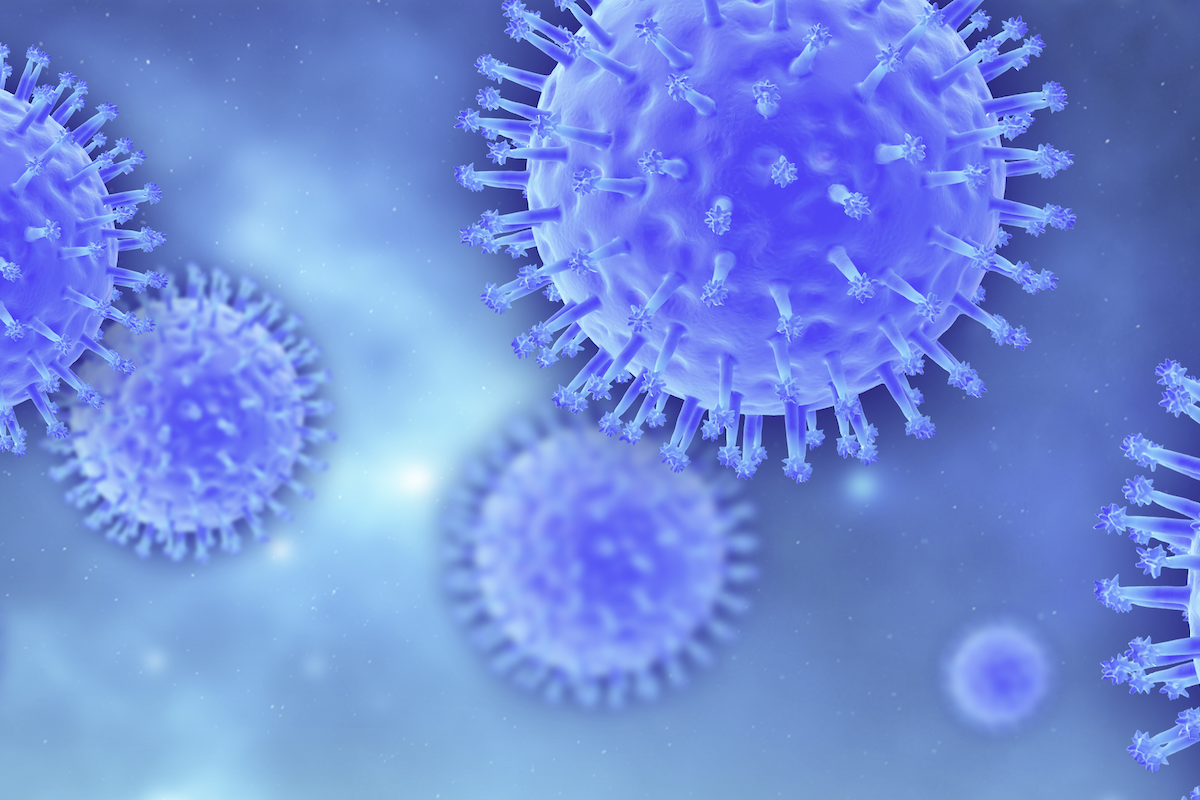A team of Emory researchers have developed a way to study how people get the flu from breathing in the virus. This method will allow researchers to identify ways to stop airborne spread of flu and test vaccines or drugs that can block people from ever becoming infected. The results were published online in a pre-print format.
So-called “challenge studies,” work by deliberately exposing volunteers to flu virus in a controlled setting and studying their symptoms and immune responses to better understand viral disease and ways to combat the infections.

Prof. Seema Lakdawala
“These older methods are very different than what actually happens every flu season,” says Lakdawala, associate professor of microbiology and immunology in Emory University’s School of Medicine and co-director of the center for transmission of airborne pathogens. “The virus dose given up the nose is 300,000 viral particles. In real life, we probably breathe in a much lower amount, and it deposits at different sites within the respiratory tract.”
Aerosols: The more precise delivery method
Seeking a more physiologically accurate alternative, Lakdawala and co-principal investigator Nadine Rouphael, professor of infectious diseases and director of the Hope Clinic, worked with aerosol scientists to test two different kinds of aerosol generators to create synthetic aerosols containing the virus that participants could breathe in naturally. Aerosols had been tried up to the 1960s but abandoned in favor of intranasal administration over safety concerns. However, 60 years of advancements in aerosol science have opened the door for researchers to deliver more controlled, precisely sized aerosols at more accurate doses.

Prof. Nadine Rouphael
Lakdawala was amazed at the results. “We took swabs of the patients’ nose every day to test for the flu virus, and even though the participants had very mild disease they had high levels of infectious virus. We think this is much more representative of what we see typically in flu season—a little runny nose, a little scratchy throat, but still shedding lots of virus that continues to spread from person to person.”
The researchers then repeated their experiment with different size aerosol particles and got similar results, infecting volunteer subjects who had no serious side effects. This establishes the aerosol-based challenge studies as safe, consistent and reproducible.
Next step: Multiple droplet sizes at once
Lakdawala, who studies viral transmission in animal models, now wants to create an experiment that would expose test subjects to multiple droplet sizes at once in a popup tent.
“We’re going to install a kind of coughing machine that produces various sized aerosols into the space,” she says. “We think that might be a better way to test universal vaccinations, emerging antivirals, masking and air filtration to reduce susceptibility to viral infection. We want to precisely test the effectiveness of different interventions, both non-pharmaceutical interventions like prior immunity, and pharmaceutical like vaccinations, to block airborne flu infections. The hope is to figure out what it takes to stop somebody from becoming infected when they're breathing in viruses in the environment.”
The larger goal of the Emory Center for Transmission of Airborne Pathogens, established by Lakdawala and Dr. Anice Lowen, professor of microbiology and immunology and also involved in this study, is to study how viruses spread through the air, the immune response to infection, and ways to stop natural infections, including emerging outbreaks such as the current H5N1 virus impacting dairy cattle and migratory birds.
“If we had things that we knew that could stop the virus from transmitting person to person, ways to block infection from an inhalation exposure, that would be very powerful during the pandemic preparedness scenario,” says Lakdawala. “That's really been a driving focus for me for a long time. That is how we're going to help reduce the burden of influenza in every flu season.”

